Are You at the Risk of Going Blind From Glaucoma?
The eye is one of the most delicate outer organ of the body. The human body or any other animal body is so delicately put together that a very small change could cause irreparable damage.
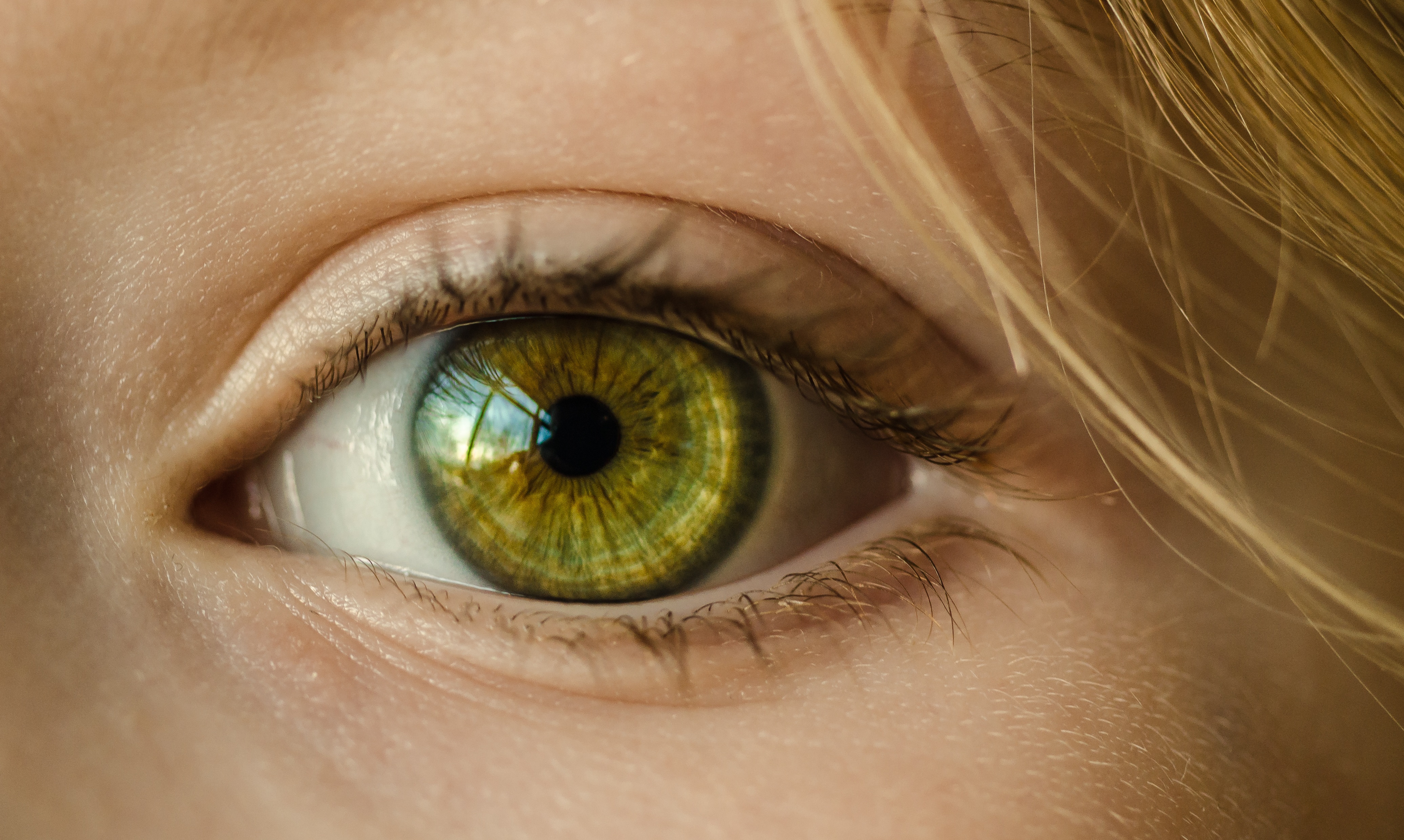
How can you tell if you're gradually going blind from glaucoma?
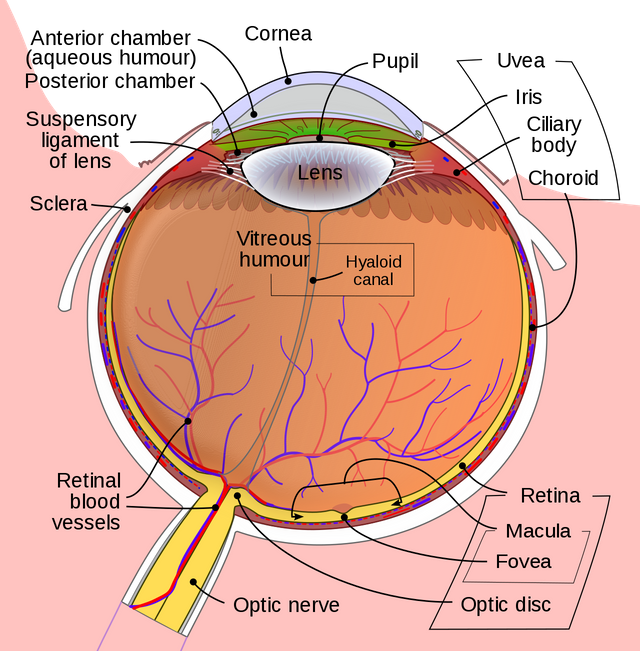
Doctors say that you can't. If you're older than forty, suffer from diseases like diabetes, have a family history of glaucoma or other eye diseases, or have been taking some form of steroid over a long period of time, then you need to visit your eye doctor more often than once a year for tests.
What is Glaucoma?
Someone asked an eye doctor, "Is it possible for a human eye to function normally, yet the owner would be blind?"
Her answer was simple. "Yes. That's what glaucoma is."
I am certain that this is an oversimplified answer but glaucoma is an eye disease in which the nerves that take image signals from the eyes to the brain have been damaged such that they can no longer perform their function. Basically, this means that the eye mechanism works well until the point where the image is to be transmitted to the brain then it happens: the image is stuck at the nerves responsible for this transmission. These nerves are called the Optic Nerves and they are located at the posterior part of the eye.
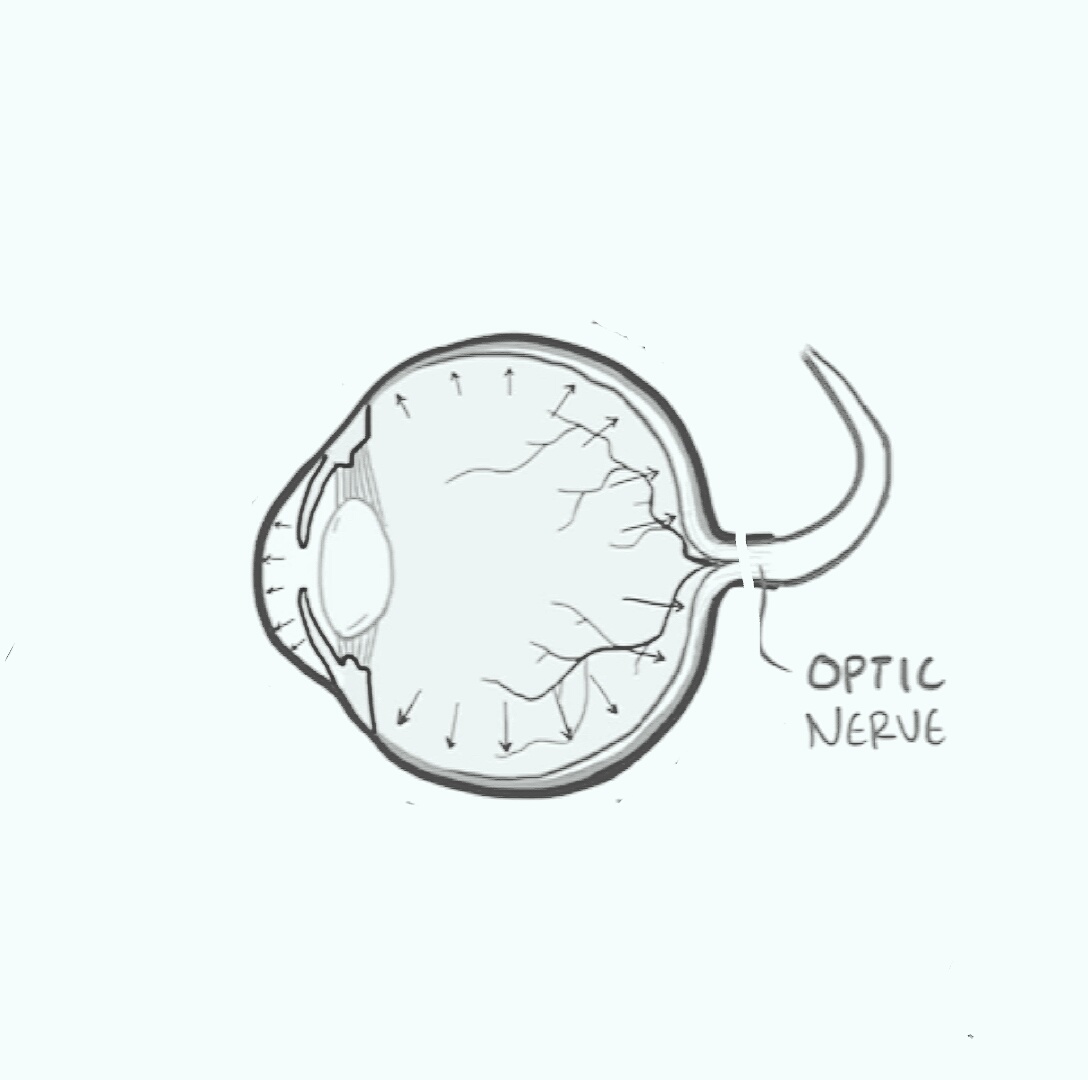
In any case, glaucoma is caused by a build up of pressure in the eye which is known as Intraocular Hypertension. This pressure comes from the fluids that is contained in the eyes. The eye is divided into the posterior and anterior sections. The fluid in the anterior section is called vitreous humor, whereas the fluid in the posterior section is called aqueous humor. These fluids have their functions in the eye.
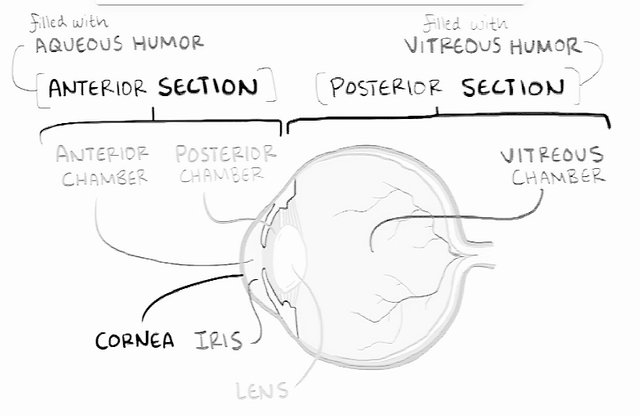
The aqueous humor is produced in the Ciliary Epithelium which also provides structural support to the posterior part of the eye. When the aqueous humor builds up pressure in a normal eye, it is drained through a spongy meshwork called Trabecular Meshwork then to the Aqueous Veins and out through the Episceral Venous System. Great.
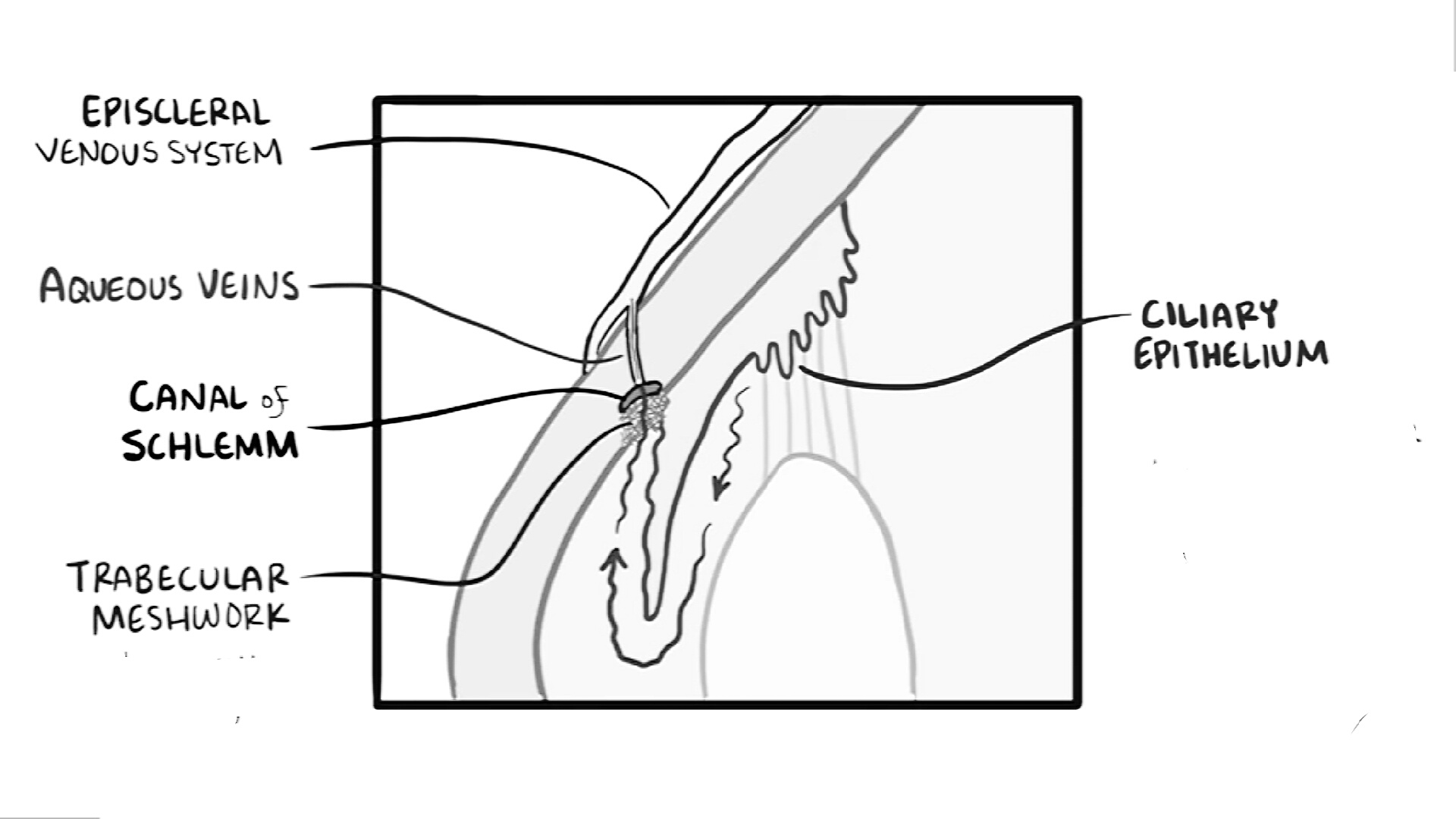
The early causes of glaucoma result when, for some reasons, aqueous humor fails to drain and therefore causes intraocular hypertension. The hypertension is said to exist for pressures greater than 21 mmHg (or 2.8 kPa).
How Does Glaucoma Develop?
In order to understand how someone with normal eye functions could develop glaucoma, we must first examine the different types of glaucoma.
Glaucoma is classified based on the process from which it results:
1. Open Angle Glaucoma
Open Angle Glaucoma, otherwise called Primary Open Angle Glaucoma or Wide Angle Glaucoma is the most common type. In this type, the angle of the trabecular mesh work appears normal but over time, the eye does not drain fluid appropriately (like a drain that is clogged over years). Due to this clogging, the eye pressure builds slowly and the optic nerve may be damaged resulting to glaucoma.
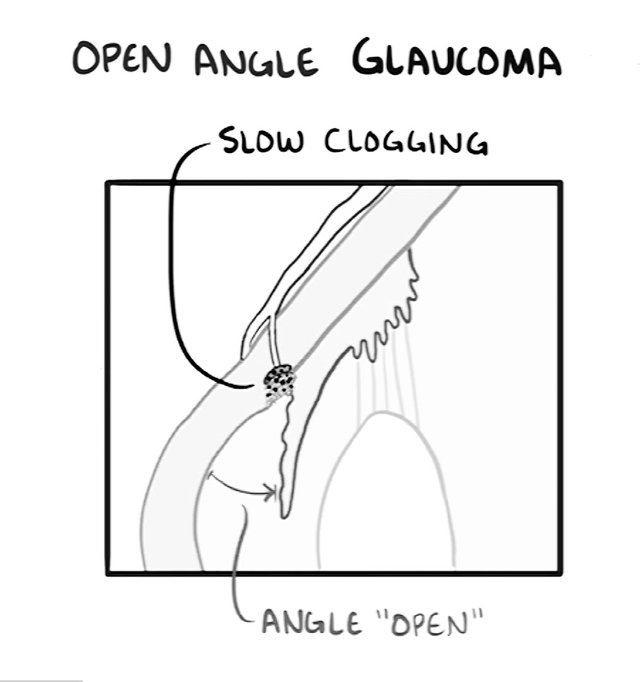
This type of glaucoma does not give warning signs because it is painless and the vision changes are gradual. The only way to discover it early is through regular checks with the doctor.
Considering that the meshwork is at a normal angle in this case, it would seem that glaucoma should not develop. It turns out that some people's optic nerves are sensitive to normal eye pressure, thereby increasing their chances of developing glaucoma.
2. Closed Angle Glaucoma
Closed Angle Glaucoma or Narrow Angle Glaucoma or Angle-Closure Glaucoma results when the lens is so close to the iris that it presses upon it restricting outflow of aqueous humor. The pressure builds quickly bringing early onset symptoms such as headaches, seeing rainbow or halo images, severe eye pain and so on.
The lens may press on the iris such that the drainage is completely blocked. This results to acute attack which must be treated immediately to avoid blindness.
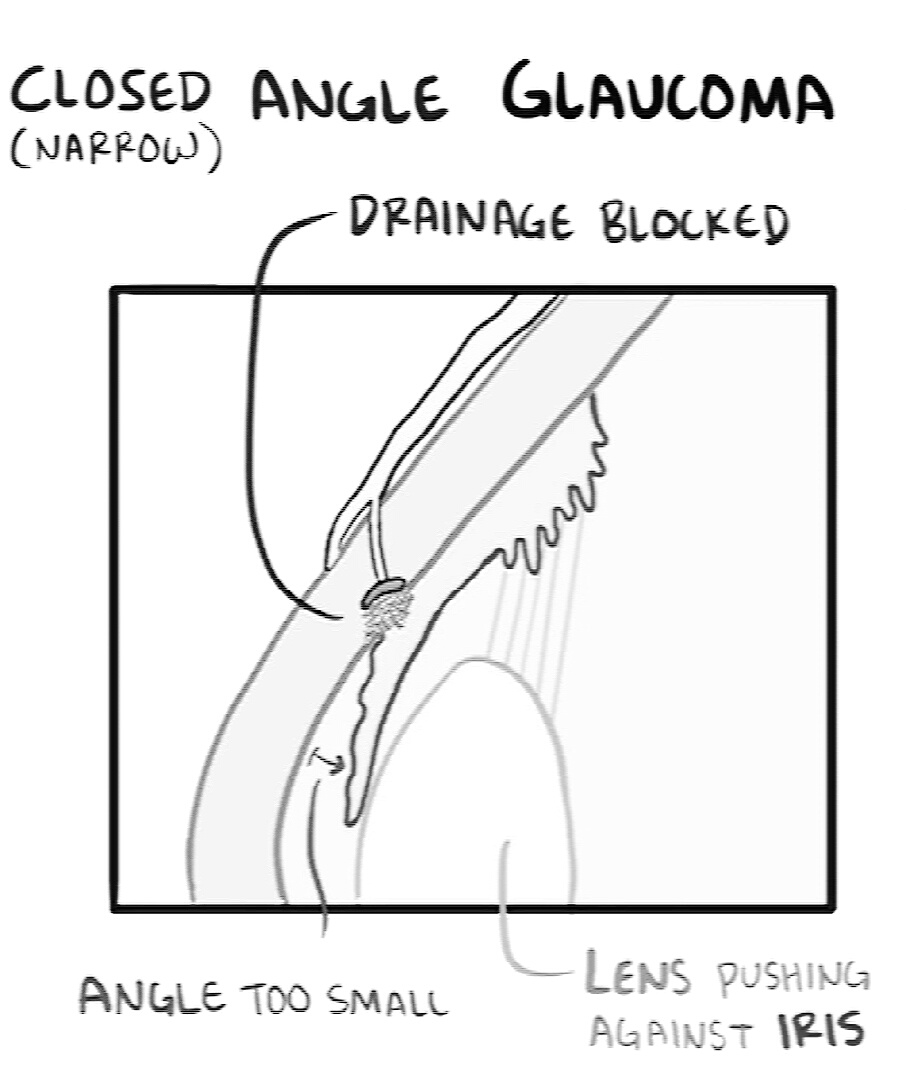
narrowing the drainage angle
In some cases, Narrow Angle Glaucoma occurs slowly over time and this is referred to Chronic Angle-Closure Glaucoma
These are the main types of glaucoma. However as mentioned earlier some people and sensitive to normal level of eye pressure.
3. Normal- Tension Glaucoma
This is the type of glaucoma referred to earlier. It exists in people who are genetically hypersensitive to normal eye pressure. A second cause is Hyperfusion which is basically "Low Bloodflow". These could destroy the optic nerve resulting eventually to glaucoma if not treated.
Diagnosis
People with symptoms of glaucoma may not notice it especially if it is due to open angle. However glaucoma is diagnosed by eye doctors through the following means.
- Visual Fluid Testing
- Assessing Intraocular Pressure (also called Tonometry)
- Examining the Optic Nerve for Initial Damage (as it wears off from inside - also called cupping)
Treatment
The treatment for glaucoma is either through
1. Medications:
medications that reduce production of aqueous humor (Beta-Andrenergic Receptor Antagonists and Carbonic Anhydrate Inhibitors) or;
medications that improve outflow of aqueous humor (Prostaglandin Analogs) or;
medications that reduce production of aqueous humor while improving outflow (Alpha-Andrenergic Antagonists)
2. Laser Treatments:
Trabeculoplasty: this is basically using a laser beam to open the trabecular meshwork to improve outflow in open angle glaucoma.
Iridotomy which means punching a hole on the iris in narrow angle glaucoma to allow outflow even though the lens is pressing upon the iris.
A Recap
Glaucoma is caused by increased aqueous humor in the eye resulting to increased pressure which wears out and damages the optic nerve causing blindness.
I hope this helps prevent more cases of glaucoma.
What can you do?
Just visit your eye doctor. What would it hurt?
References:
- Glaucoma, Causes, Tests, Treatment
- American Academy of Ophthalmology: What is Glaucoma?
- Wikipedia: Ciliary Body
It's @ojay
... I look into eyes
This is pretty insightful. Thanks for sharing.
I have never seen a medical condition explained so simply. You are amazing!
It is the most common cause of blindness in the developed countries ,so its better to consult an ophthalmologist for any eye problems especially after 40 yrs of age.
Its a good content ,thanks for sharing keep it up,cheers...